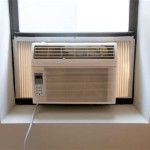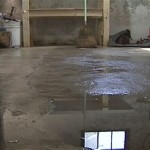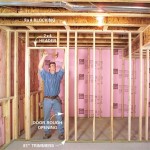Best Flooring Options For Concrete Basement Floors
Concrete basement floors present a unique set of challenges when considering flooring options. Unlike above-ground floors, basements are often susceptible to moisture, temperature fluctuations, and potential flooding. Selecting the right flooring material is essential not only for aesthetics and comfort but also to ensure longevity and prevent issues such as mold growth and structural damage. Understanding the characteristics of various flooring materials and how they interact with the concrete subfloor is crucial for making an informed decision.
The primary consideration for basement flooring is moisture resistance. Concrete is porous and can readily absorb moisture from the surrounding soil, especially if the foundation is not properly sealed. This moisture can lead to the growth of mold and mildew, which can pose health risks and damage flooring materials. Therefore, choosing a flooring option that is either inherently waterproof or can be installed with a moisture barrier is paramount. Other factors to consider include the ease of installation, the cost of materials and labor, the durability of the flooring, and the overall aesthetic appeal.
Key Point 1: Understanding Moisture Management is Critical
Before installing any flooring material, it's imperative to address any existing moisture issues in the basement. This may involve sealing the concrete floor with a waterproof sealant, installing a vapor barrier underneath the flooring, or even improving the overall drainage around the foundation of the house. Ignoring moisture problems can lead to costly repairs down the line, as moisture can damage the flooring material and create an unhealthy environment.
A simple test to assess the moisture level of the concrete is the plastic sheet test. Tape a square of plastic sheeting (approximately 2ft x 2ft) to the concrete floor and seal all the edges with duct tape. Leave it for 24-72 hours. After this period, remove the plastic. If the concrete underneath is damp or discolored, it indicates the presence of moisture. This test should be performed in several areas of the basement to get a comprehensive understanding of the moisture levels.
If moisture is present, consider applying a concrete sealer designed for basements. These sealers penetrate the concrete and create a waterproof barrier, preventing moisture from rising to the surface. Ensure the sealer is compatible with the chosen flooring material, as some sealers may interfere with the adhesion of certain adhesives or underlayments.
In addition to sealing, installing a vapor barrier is often recommended. This is a sheet of plastic that is placed directly on the concrete floor before the flooring is installed. The vapor barrier prevents moisture from rising through the concrete and damaging the flooring. The vapor barrier should be properly sealed at the seams and around the perimeter of the room to create a continuous barrier.
Key Point 2: Exploring Different Flooring Options and Their Suitability
Several flooring options are suitable for concrete basement floors, each with its own advantages and disadvantages. Factors such as cost, durability, moisture resistance, and aesthetic appeal should be weighed when making a decision.
Epoxy Flooring: Epoxy flooring is a popular choice for basements due to its waterproof and durable nature. It is a two-part system consisting of a resin and a hardener that, when mixed, create a hard, seamless surface. Epoxy is resistant to stains, chemicals, and impact, making it ideal for basements that are used as workshops or recreation areas. However, epoxy can be expensive to install, and the surface can be slippery when wet.
Luxury Vinyl Tile (LVT) and Luxury Vinyl Plank (LVP): LVT and LVP are excellent options for basements due to their water resistance and durability. They are designed to mimic the look of hardwood or tile but are much more resistant to moisture. LVT and LVP are also relatively easy to install, making them a popular choice for DIY projects. They are available in a wide range of styles and colors, allowing for a variety of design options. Some LVT and LVP products have a built-in underlayment, providing added comfort and insulation.
Engineered Wood Flooring: Engineered wood flooring consists of a thin layer of hardwood veneer bonded to multiple layers of plywood or other composite material. This construction makes it more stable and less susceptible to moisture damage than solid hardwood flooring. It is generally less expensive than solid hardwood and is easier to install. A moisture barrier is still crucial with engineered wood, as excessive moisture can cause warping or delamination.
Tile Flooring: Tile, particularly porcelain tile, is an excellent choice for basements due to its durability and water resistance. Tile is available in a wide range of styles, colors, and sizes, allowing for a variety of design options. It is also relatively easy to clean and maintain. However, tile can be cold underfoot, so consider installing radiant floor heating for added comfort. Proper installation is critical to prevent cracking or water damage from seeping through the grout lines.
Carpet Tiles: Carpet tiles are a modular flooring option that can be a good choice for basements, especially in areas where comfort is a priority. They are relatively easy to install and can be replaced individually if damaged. However, carpet tiles are not waterproof and can be susceptible to mold and mildew if exposed to moisture. Choose carpet tiles that are specifically designed for basements and that have a moisture-resistant backing. Regular cleaning and maintenance are essential to prevent moisture buildup.
Rubber Flooring: Rubber flooring is a durable and resilient option that is ideal for basements that are used as gyms or playrooms. It is resistant to impact and provides a cushioned surface that is comfortable to walk on. Rubber flooring is also water-resistant and easy to clean. It is available in a variety of colors and styles. However, some rubber flooring can have a strong odor, so it is important to choose a product that is low in volatile organic compounds (VOCs).
Floating Subfloor Systems: Floating subfloor systems create an air gap between the concrete floor and the flooring material. This air gap allows for better drainage and ventilation, reducing the risk of moisture buildup. These systems typically consist of interlocking panels or tiles that are placed over the concrete floor. They can be used with a variety of flooring materials, including carpet, laminate, and wood.
Key Point 3: Installation Considerations and Best Practices
Proper installation is crucial for the longevity and performance of any flooring material. It is important to follow the manufacturer's instructions carefully and to use the appropriate tools and materials. For some flooring options, professional installation may be recommended, especially if the basement floor is uneven or has significant moisture issues.
Before starting the installation process, ensure the concrete floor is clean, dry, and level. Remove any debris, dirt, or loose particles. Fill any cracks or holes with a concrete patching compound and allow it to dry completely. If the floor is uneven, consider using a self-leveling compound to create a smooth surface.
When installing flooring that requires adhesive, use an adhesive that is specifically designed for concrete basement floors. These adhesives are formulated to withstand moisture and temperature fluctuations. Apply the adhesive evenly and according to the manufacturer's instructions.
For floating floors, ensure the subfloor is clean and level. Install a vapor barrier over the concrete floor before laying the flooring. Follow the manufacturer's instructions for interlocking the panels or tiles. Leave an expansion gap around the perimeter of the room to allow for movement due to temperature and humidity changes.
When installing tile flooring, use a thin-set mortar that is designed for concrete basement floors. Apply the mortar evenly and use a notched trowel to create ridges that will help the tile adhere to the floor. Grout the tiles after the mortar has dried completely. Seal the grout lines to prevent water from seeping through.
Proper ventilation is essential during and after the installation process. Open windows and doors to allow for air circulation and to help the adhesive or mortar dry properly. Use fans to circulate the air and speed up the drying process. Avoid walking on the newly installed flooring until it has fully cured.
Regular maintenance is essential to keep the basement floor in good condition. Clean the floor regularly with a mild detergent and water. Avoid using harsh chemicals or abrasive cleaners, as these can damage the flooring. Inspect the floor regularly for signs of moisture damage or wear and tear. Repair any damage promptly to prevent further problems.
Selecting the best flooring option for a concrete basement floor requires careful consideration of various factors, including moisture resistance, durability, cost, and aesthetic appeal. Understanding the specific challenges of basement environments and properly addressing them with appropriate preparation and installation techniques will help ensure a long-lasting and comfortable flooring solution.

6 Inspiring Ideas For Basement Flooring In Portland

How To Choose The Right Floor For Your Basement Gc Flooring Pros

Thermaldry Basement Flooring Systems Waterproof

Best Basement Flooring Options Cork Floating Floors Icork Floor

Basement Flooring Options Choosing The Best Solutions

2024 Buyer S Guide Best Basement Flooring Over Concrete

A Guide To Stained Concrete Basement Floors

The Best Flooring Options For Your Basement

Stained Concrete Basement Floor Ideas

Best Flooring Options For Your Basement Ideas Floor







